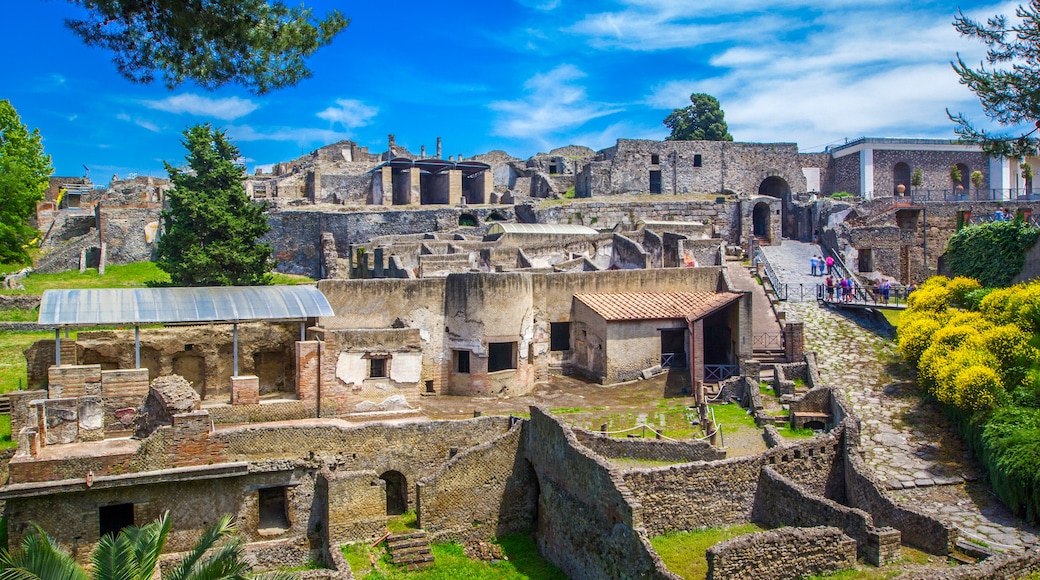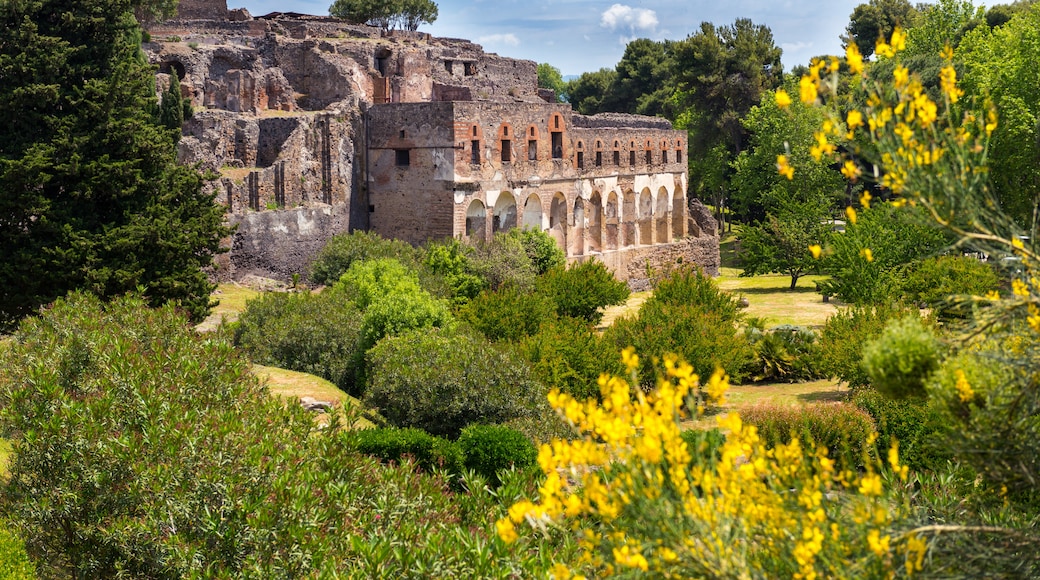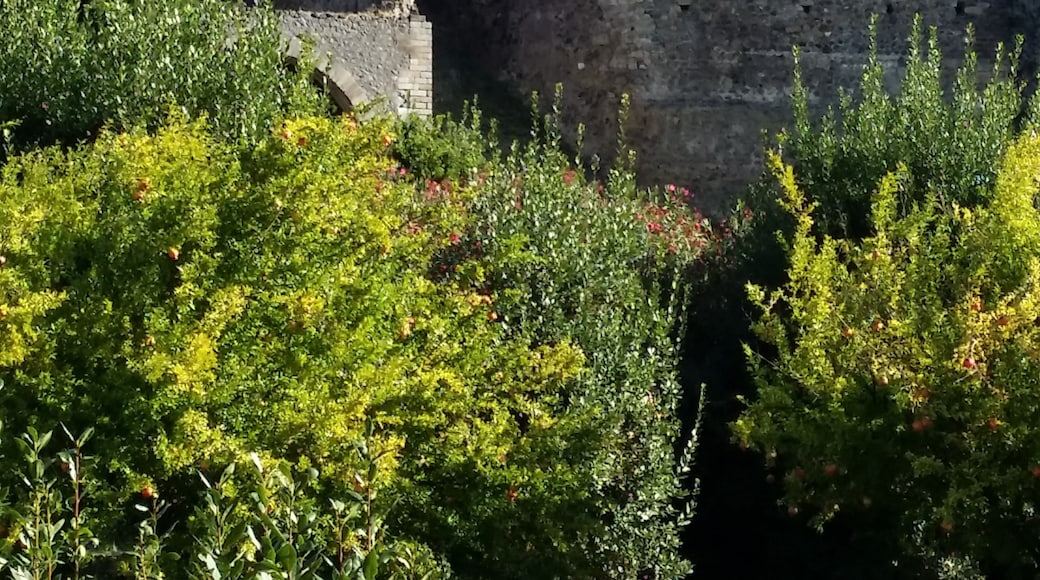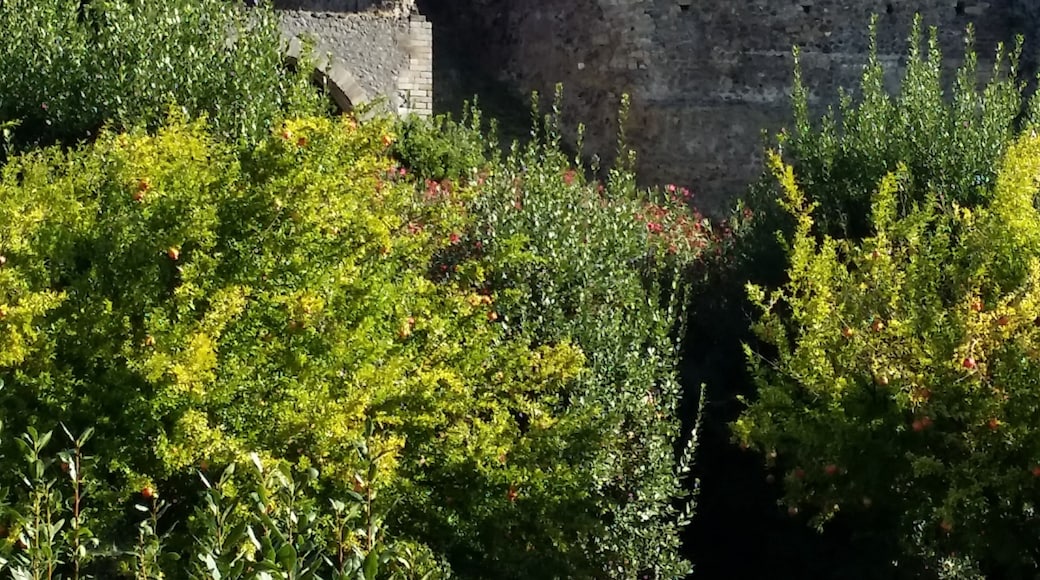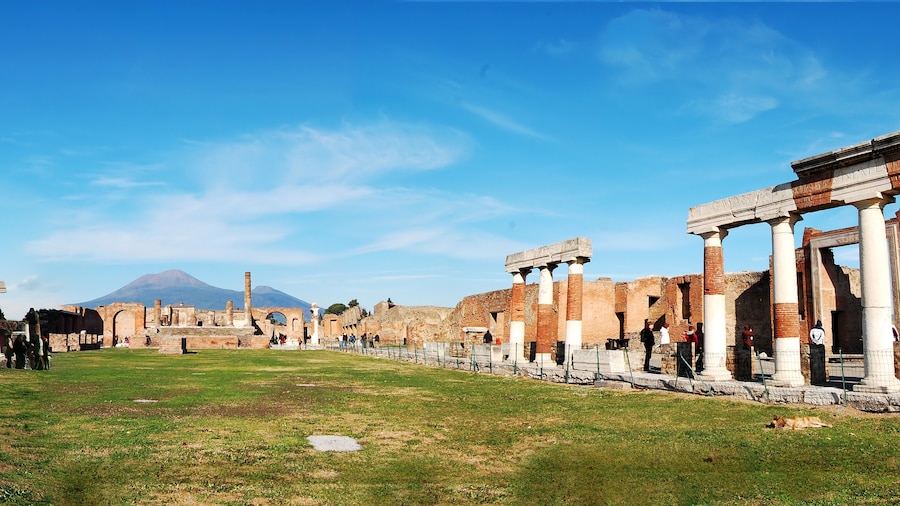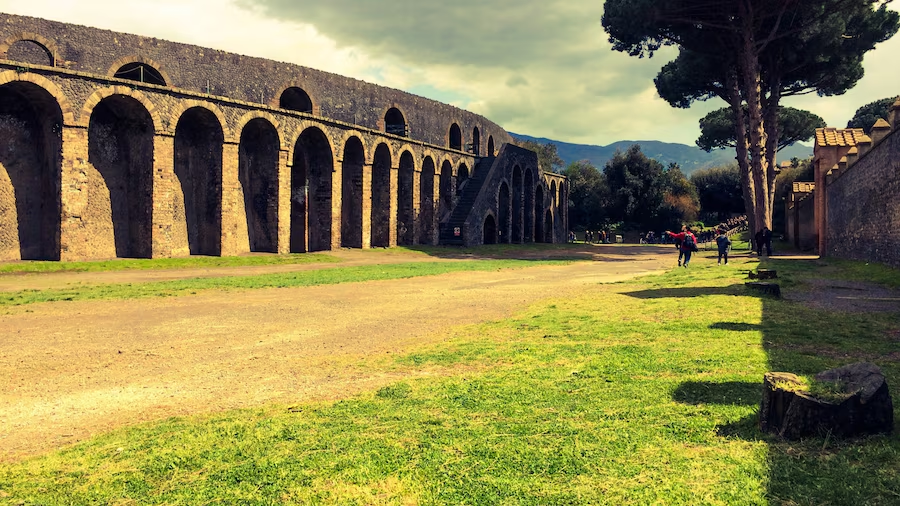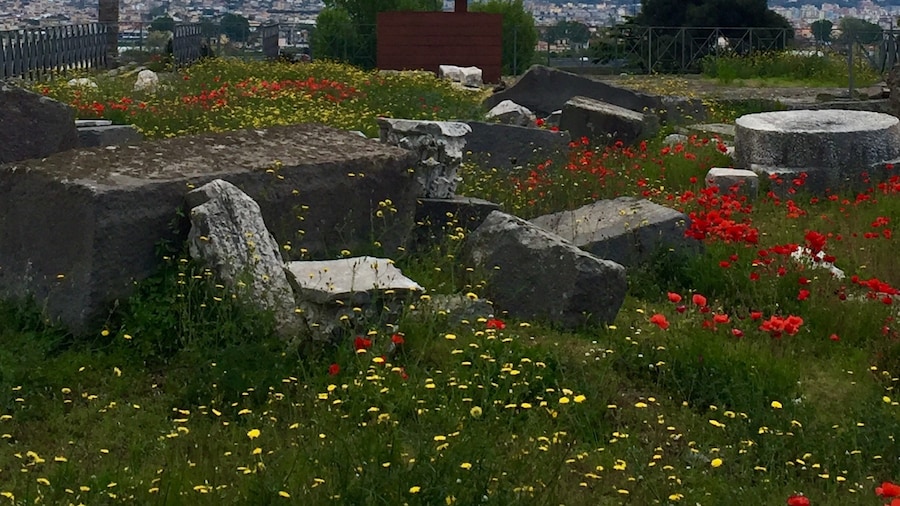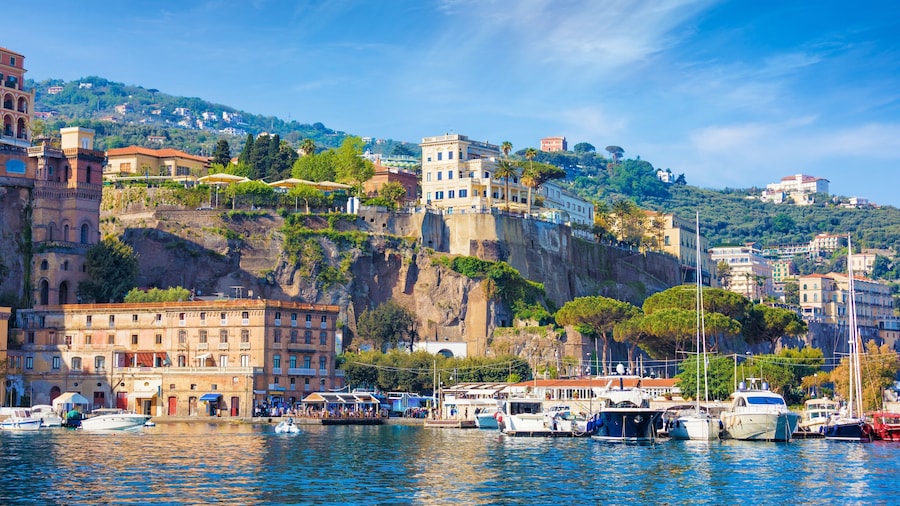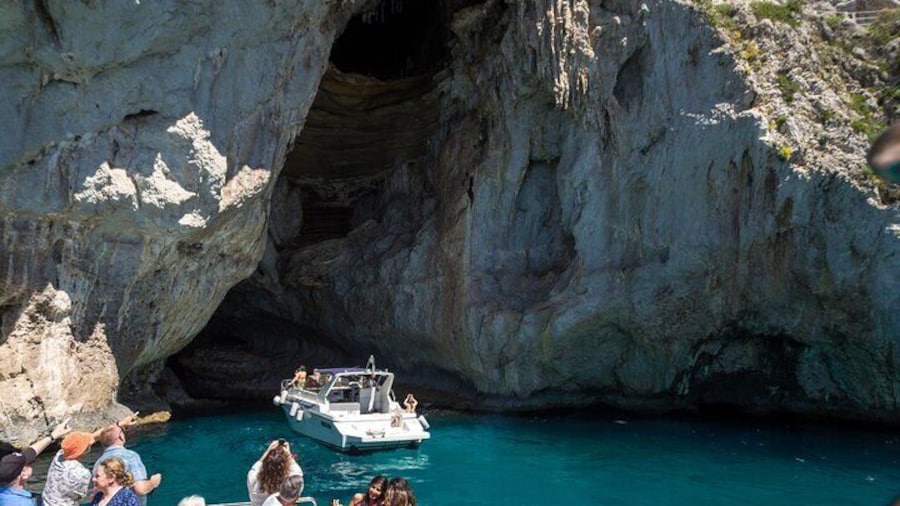Step back in time in this ancient Roman city, incredibly preserved by a Volcanic eruption over 2,000 years ago.
Pompeii was a thriving Roman city when in A.D. 79 the nearby Mount Vesuvius volcano erupted to devastating effect. The city was completely wiped out by the ensuing pyroclastic flow which engulfed the buildings, streets and inhabitants, casting many of them in clay forms which were discovered centuries later.Excavations began in 1748 and today most of the city has been cleared and is open to visitors to explore one of the biggest and most fascinating ruins of the ancient world.It really is an eerie feeling to wander streets where life ended so abruptly 2,000 years ago. Houses remain perfectly intact, frescoes are left unfinished and casts of the bodies of those who were unable to escape the volcano’s devastation are on display. The preserved city offers an unrivalled insight into life in the Roman Empire.Enter the city through the arching brickwork of the Porta Marina and head towards the large town square where you’ll find striking two-storey buildings and lovely views of Mount Vesuvius. Nearby, keep an eye out for the columns where the Temple of Jupiter stood and for the façade of the city hall.You could spend a whole day wandering in and out of the dozens of buildings, which include more than 40 bakeries and 130 restaurants and bars. Many of the public buildings are excellently maintained, such as the Forum Baths – a superb example of the famous Roman bath houses. The houses of the town’s wealthier residents have some of the best-preserved features including mosaics and frescoes. The House of the Tragic Poet and the House of the Faun, with its renowned bronze statue of a dancing faun, are two of the most impressive.You should put aside at least a day for your trip to this one-of-a-kind attraction. If you’re coming from Naples, take the Circumvesuviana line toward Sorrento. There is an admission fee for the town which is open daily throughout the year.

